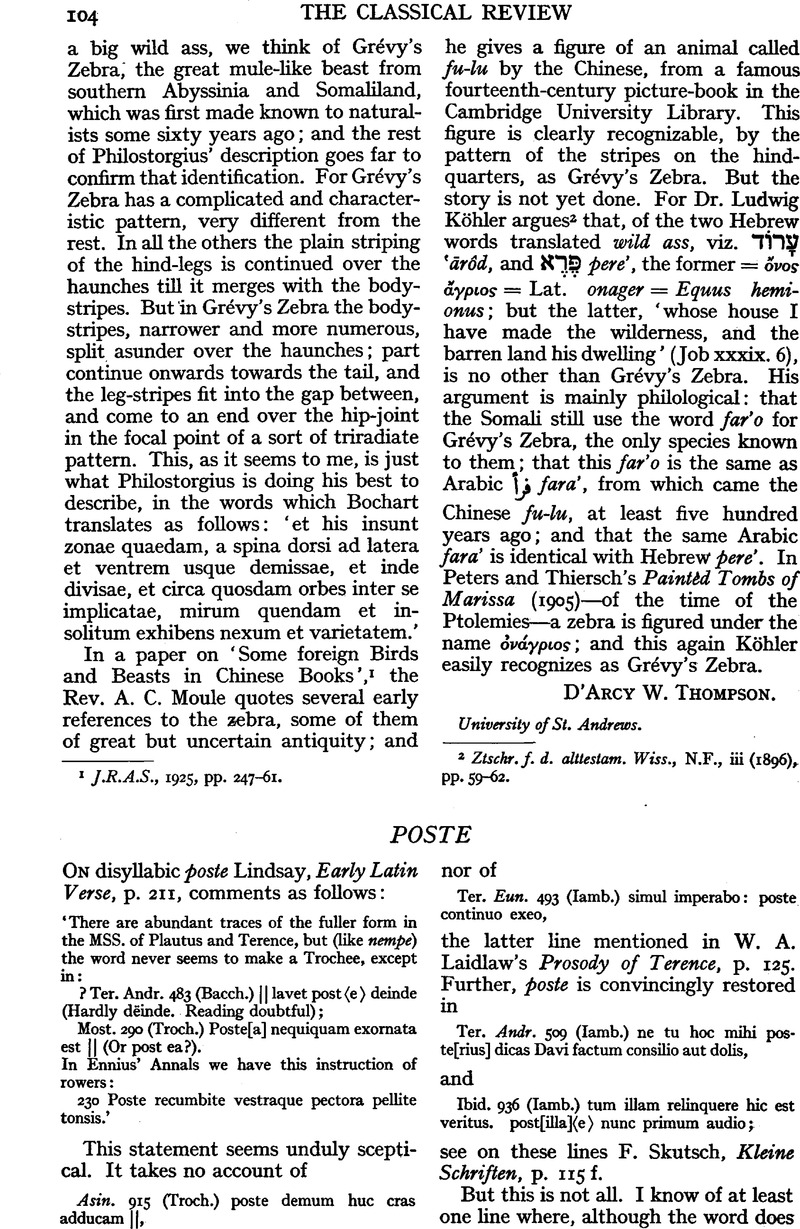No CrossRef data available.
Article contents
Poste
Published online by Cambridge University Press: 27 October 2009
Abstract

- Type
- Review Article
- Information
- Copyright
- Copyright © The Classical Association 1943
References
page 105 note 1 Amph. 1035 (a word has dropped out); Rud. 1105 (read sur[ru]pta); Stick. 699 (read provincial, with quasi-diaeresis); True. 810 (read pol pertinet); 897 (read si[e]s. (ec)quid). One or two examples are found in a canticum (Pseud. 140?; Rud. 283?), and, finally, in Capt. 285 and 633 the monstrous name Thensaurocrysonicochrysides makes diaeresis impossible.
page 106 note 2 Having harboured it for many years, I will not entirely suppress the suspicion that, like the e fo poste, the original final e of huce, etc., might create a quasi-caesura or quasi-diaeresis in at least some of them. As far as the senarii are inter might well belong to a category different from ad and apud. Of the septenarii Cist. 669 would fall in, and extra and praeter would line up the inter. but Mil. 995 and Trin. 333 (less decidedly Cist. 87) seem to bar this way.


